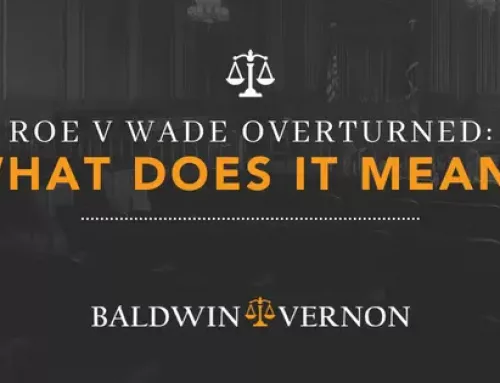In 1973, Roe v Wade changed the outlook of women’s rights to abortion throughout the country. The US Supreme Court took down the Texas statute banning abortion and made it legal for women to have the procedure in the United States.
In the past, abortions were illegal throughout most states and would lead to women having an unwanted child, looking for unlawful abortion options, or seeking out medications that could help. This raised the rate of abortion medications being sold and doctors performing dangerous and illegal procedures. Soon, the medicines were also anointed illegal, and women’s right to abortions was cut in more ways than one. For many women and activists in the country, this caused outrage. Groups and people, including Planned Parenthood, Women’s Health Organization, and Norma McCorvey, worked together to change the laws we have today.
Many of the changes were done almost a century ago without considerable changes or issues. However, in May of 2022, a leak of information from a Supreme Court draft was released and showed that they had plans to demolish the Roe v Wade ruling.
This has brought many to question what the future holds for women’s rights and their privacy.
What Did Roe v Wade Accomplish?
Roe v Wade originated from a Texas woman, Norma McCorvey, seeking out an abortion in 1969. At this time, Texas only allowed for legal abortions if the mother’s life was at risk. McCorvey was unable to leave the state to look for other legal options. She tried to do an illegal abortion, as many women did; however, it was unsuccessful. Her next move was to attempt to change the nation’s laws as a whole.
Starting in June 1970, a Texas district court ruled that the state’s abortion law was illegal and against a woman’s right to privacy, as stated in the 14th amendment. This ruling was brought through to the United States Supreme court in 1973, where abortions were made legal nationally in a 7-2 ratio.
As a result, all states were allowed to give women the option to choose abortion; however, they could enforce their own laws if they weren’t directly opposing the act. This was the case in Pennsylvania with their own Abortion Control Law, which caused the trial of Planned Parenthood v Casey in 1992. The Abortion Control Law enforced women to be read negative consequences due to abortions, which is labeled as informed consent, forcing women to have their husbands notified before the procedure, among other things. The case went to Planned Parenthood with a 5-2 reaffirming vote for Roe v Wade.
Why a Sudden Change?
With many states concluding their own abortion laws, Mississippi was one of them. They had a law prohibiting abortions after 15 weeks, well before fetus visibility. This was well-known to be contradictory to Roe v Wade and Planned Parenthood v Casey, so a new case was put into action; Women’s Health Organization v Dobbs. This case, beginning in 2016, was debating if pre-visibility abortions were against the constitution.
This more recent trial brought many women and activists to fight for their rights and continue to keep Roe v Wade the top priority in their abortion rights. However, as this trial was brought through the courts, a leak was released in May of 2022, including information dating back to February 2022. Justice Samuel A. Alito Jr. stated that the court voted to attempt to overturn Roe v Wade and Planned Parenthood v Casey.
This leak caused an uproar of anger and confusion throughout the country as protests and activists attempted to fight for women’s rights.
What to Expect in the Upcoming Months
While protests are still active in many states around the country, an answer to the leak or the Women’s Health Organization v Dobbs is not certain as of yet. A final ruling of the case should be concluded by June or July of 2022.
The leak itself should not be taken as a final representation of the Supreme Court’s wishes and future rulings. Some Justice were unclear on their vote at the time, leading to this leak not being fully transparent about what the future holds.
If Roe v Wade is to be overturned, it would not federally outlaw abortions completely. However, it would allow states to call for their own rulings and enable them to create their own laws if regulations are not set in place currently.
Currently, in Missouri, it is legal to have an abortion up to 21 weeks and five days after conception unless the woman’s health or life is at risk. Meanwhile, the current abortion laws in Kansas allow for an abortion 20-22 weeks after postfertilization only in cases of life or severely compromised physical health.
With all the possible changes occurring in this nation’s future, it is crucial to understand your rights within your state and what they mean to you. For any questions or concerns as this debate continues, reach out to the team at Baldwin & Vernon.







